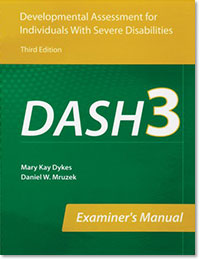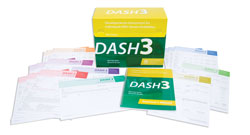

Author(s): Mary Kay Dykes / Daniel W. Mruzek
Administration and Scoring
Typically, the examiner completes each scale by directly observing the examinee during evaluation sessions, a process that requires from 2 to 3 hours. However, when time is a factor, or when the objective is to compare skills across settings (e.g., home and school), the examiner can complete the test by interviewing parents, teachers, or others who know the examinee well. Alternatively, these individuals can respond to DASH-3 items independently, with examiner follow-up.
Basals and ceilings are used to determine where to start and stop the administration. The examiner or informant rates each item on a 5-point scale. Item scores are totaled to arrive at the examinees developmental age for each subscale and scale, and for overall performance.
The GOAL assesses functional motor abilities necessary for tasks of daily living. It consists of seven tasks.
The VMI is the best researched and most economical visual-motor battery available.
The VSA provides an easy way to screen for common visual skill difficulties that can impact academic performance and participation, including reading and writing tasks by way of five items that assess binocular, ocular-motility, and visual-motor skills.
The QNST-3R is an individually administered, empirically based assessment of the development of motor coordination and sensory integration.
The PDMS-3 is an in-depth assessment of early childhood motor development.
This revision of the TVMS assesses how well a person can coordinate visually guided fine-motor movements to copy a design while it is in sight.